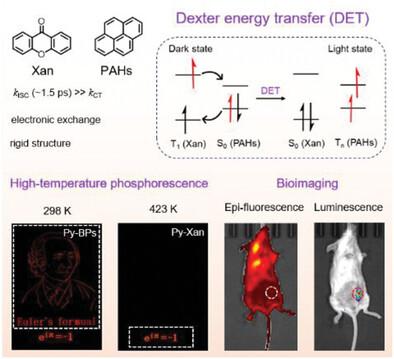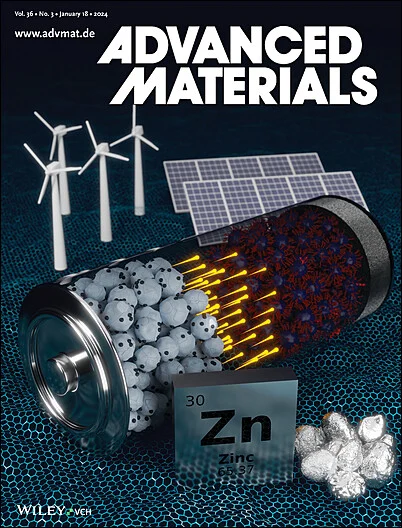Red Phosphorescence at Elevated Temperatures Enabled by Dexter Energy Transfer in Polyaromatic Hydrocarbon-Xanthone Systems
IF 27.4
1区 材料科学
Q1 CHEMISTRY, MULTIDISCIPLINARY
引用次数: 0
Abstract
Organic materials with red persistent phosphorescence hold immense promise for biotechnology due to their excellent tissue permeability and high signal-to-background ratios. However, inefficient spin-orbit coupling, high triplet susceptibility, and narrow energy gapspromoted nonradiative deactivations, pose a formidable obstacle to achieving efficient red phosphorescence. This study addresses these challenges by introducing xanthone (Xan)-based host–guest systems. Utilizing polyaromatic hydrocarbons (PAHs) as guests, efficient red to near-infrared (NIR) phosphorescent materials with ultralong lifetimes and high quantum yields of up to 821 ms and 2.32%, respectively, are successfully developed. Ultrafast spectroscopy and theoretical studies reveal that Dexter energy transfer (DET) is the dominant mechanism responsible for red phosphorescence. This DET process between Xan and PAHs not only effectively utilizes the dark triplet state of the Xan host but also significantly enhances the triplet generation of the PAH guests, transforming them into potent phosphorescent luminophores. Furthermore, the inherent rigidity of Xan and PAHs endows the resulting materials with excellent phosphorescence performance, even at elevated temperatures (e.g., 423 K). This strategy, proven to be general, paves the way for designing efficient red/NIR phosphorescent materials through the DET mechanism, enabling their applications in molecular imaging and advanced high-temperature encryption.

求助全文
约1分钟内获得全文
求助全文
来源期刊

Advanced Materials
工程技术-材料科学:综合
CiteScore
43.00
自引率
4.10%
发文量
2182
审稿时长
2 months
期刊介绍:
Advanced Materials, one of the world's most prestigious journals and the foundation of the Advanced portfolio, is the home of choice for best-in-class materials science for more than 30 years. Following this fast-growing and interdisciplinary field, we are considering and publishing the most important discoveries on any and all materials from materials scientists, chemists, physicists, engineers as well as health and life scientists and bringing you the latest results and trends in modern materials-related research every week.
 求助内容:
求助内容: 应助结果提醒方式:
应助结果提醒方式:


